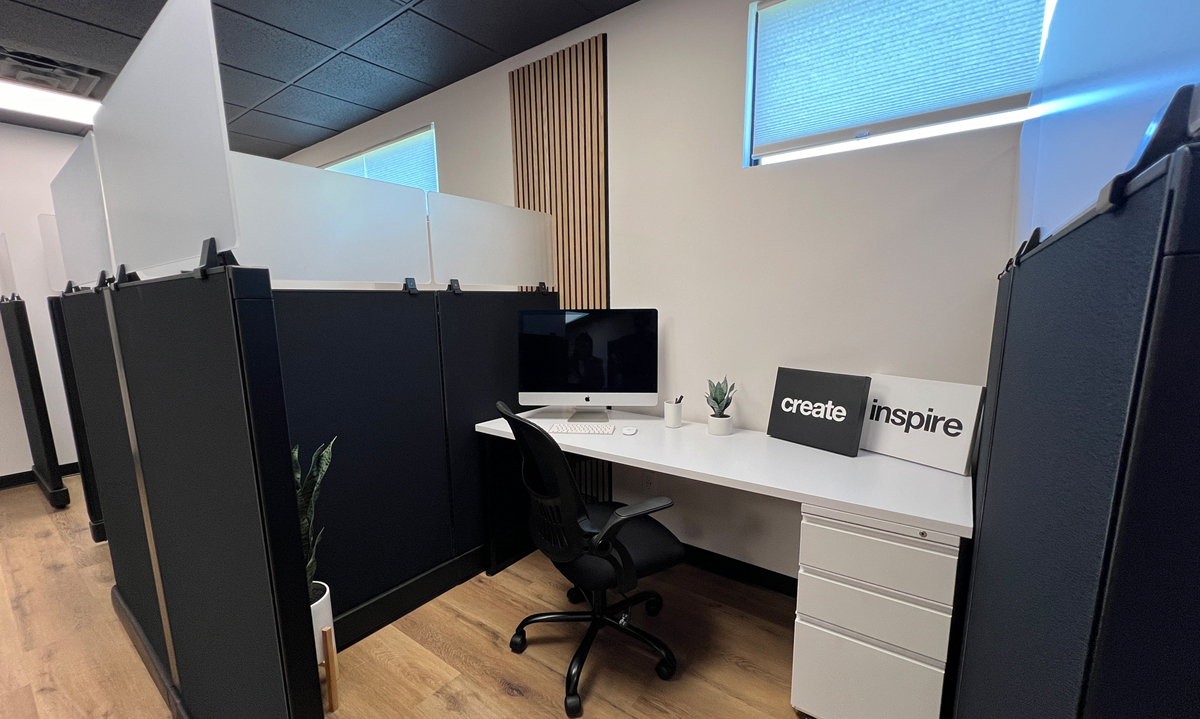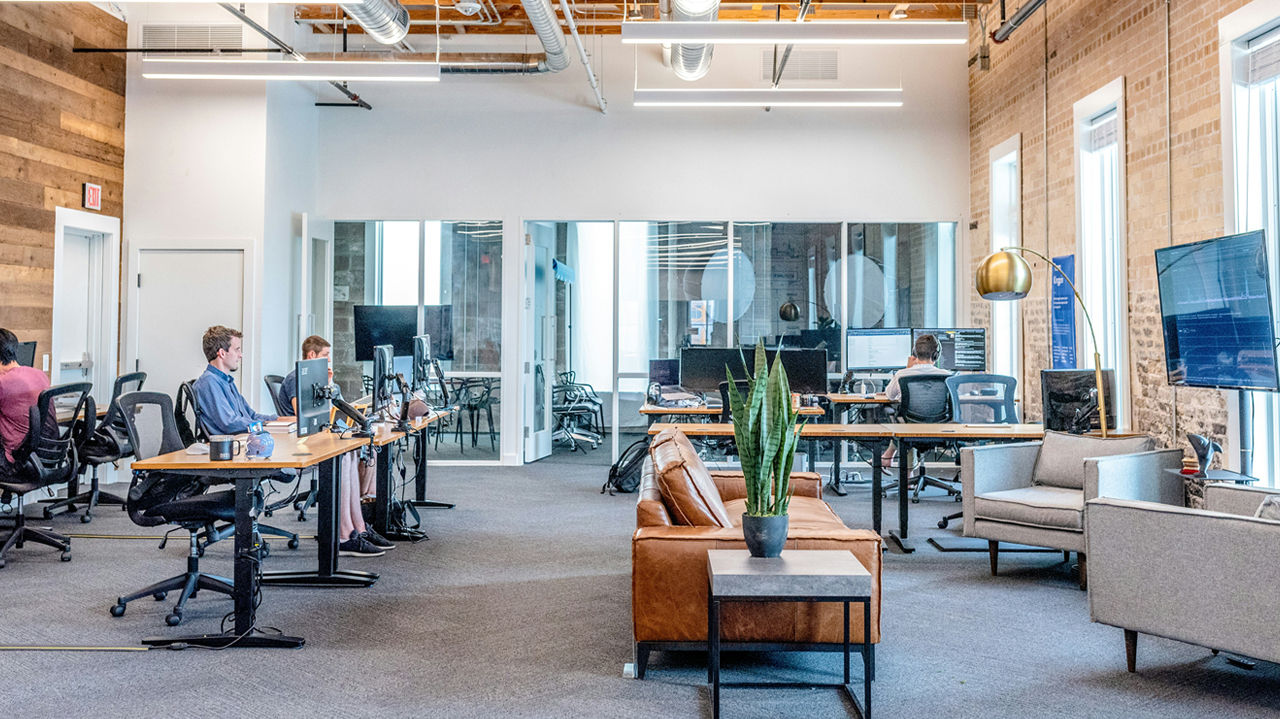
Choosing the Right Workspace: Virtual vs. Traditional—What’s Best for Your Business?

The modern workplace is evolving faster than ever. Technological advancements, shifting workforce expectations, and changing business landscapes have redefined how and where companies operate. While traditional office spaces once served as the cornerstone of productivity and collaboration, many businesses today function seamlessly without a fixed location, leveraging virtual tools to stay connected. However, not all organizations thrive in a remote setting—some rely on in-person interactions to foster innovation, strengthen company culture, and build client relationships. Choosing between a virtual office space and a traditional one is more than a logistical decision; it’s a strategic move that influences productivity, team dynamics, operational efficiency, and long-term growth. The right choice depends on your industry, workforce structure, and business objectives. Today, we’ll explore the key factors that can help you decide which model is right for your business.
Understanding Virtual Office
As workplace concepts evolve, virtual office services have emerged as a scalable alternative to traditional office spaces. This modern solution enables businesses to establish a professional presence by leveraging digital communication, collaboration, and administration tools. Offering essential services such as a business address, phone answering, and access to office space as needed, virtual offices eliminate the need for companies to lease or maintain a physical workspace. Businesses can enhance productivity by utilizing cloud-based platforms, video conferencing, and project management software while significantly reducing overhead costs. However, maintaining strong team cohesion, ensuring cybersecurity, and managing client relationships remotely can present unique challenges. A virtual office provides a flexible and cost-effective solution, making it particularly advantageous for startups, freelancers, and remote consultants. Below are some key advantages that make virtual offices a wise choice.
Advantages of a Virtual Office
- Flexibility: A key advantage of a virtual office is its flexibility. Businesses can operate from anywhere while maintaining a professional presence, eliminating the constraints of a fixed location. This adaptability supports work-life balance, accommodates different time zones, and facilitates seamless collaboration across teams, making it an ideal solution for remote and global businesses.
- Cost-Effectiveness: Virtual offices offer a highly economical alternative for startups, freelancers, and growing businesses. They provide essential professional services such as a business address, phone answering, and access to meeting rooms while eliminating the costs associated with leasing, furnishing, and maintaining a physical office. This cost-saving model allows businesses to allocate resources more efficiently and invest in growth.
- Professional Presence: A virtual office solution provides businesses with a prestigious address, mail handling, and professional phone answering services, ensuring a polished and trustworthy image without needing a physical office.
- Scalability: Virtual offices provide the flexibility to expand operations across multiple locations while keeping costs low, making growth more efficient and sustainable.
- Reduced Commuting Time and Costs: Virtual offices eliminate the need for daily commutes, saving employees time and money and reducing their stress levels.
- Business Continuity and Resilience: Virtual offices provide organizations with the agility to navigate unexpected disruptions, such as natural disasters or public health emergencies. Businesses can swiftly adapt to changing circumstances by allowing employees to work remotely. Virtual offices also ensure productivity and consistent service delivery.
- Access to Global Workforce: A virtual office removes geographic limitations, allowing businesses to connect with professionals worldwide. This access empowers companies to build teams globally with the right skills and experience.
- Access to On-Demand Service: Virtual offices make it simple for businesses to access on-demand services like fully equipped meeting rooms and dedicated administrative support. This option enables a professional atmosphere while keeping operational costs low and flexible.
Although the virtual office pricing model is becoming increasingly popular, it comes with challenges that businesses must weigh carefully. Some of these challenges are given below.
Challenges of Virtual Office
- Cybersecurity & Data Privacy Concerns: Protecting confidential business information in a virtual environment can be more complex, increasing the risk of data breaches, hacking, and unauthorized access.
- Communication Limitations: Working remotely in a virtual environment may sometimes cause misinterpretation of valuable information, delays in response, and reduced team collaboration. All of these challenges can impact productivity.
- Limited Networking Opportunities: Since in-person interactions are not done in virtual office environments, it becomes difficult to build strong professional relationships.
- Coordination Across Time Zones: Managing a remote team across multiple time zones can lead to scheduling conflicts and workflow disruptions. Delayed responses and misaligned work hours may slow project timelines, hinder real-time collaboration, and complicate decision-making processes.
- Blurring of Work & Personal Life: Remote work often blurs the boundary between professional and personal life, making disconnecting harder. This can result in longer work hours, heightened stress, and challenges maintaining a healthy work-life balance, ultimately affecting overall well-being.
- Perceived Lack of Credibility: Physical office presence is essential for trust and credibility in specific industries.
- Challenges in Maintaining Company Culture: Building a strong company culture in a virtual environment requires extra effort, as employees may feel disconnected from the organization’s mission and values.
- Potential for Employee Isolation: Remote work can lead to feelings of loneliness and reduced team cohesion.
Understanding Traditional Office Spaces
A traditional office is a dedicated physical workspace where employees and teams operate in a structured environment. It provides access to essential office resources, administrative support, and designated areas for meetings and collaboration. Standard features include individual workspaces like cubicles or desks, fully equipped meeting rooms with audio-visual technology, shared amenities like kitchens and lounges, and welcoming reception areas. This formal setup fosters direct communication, enhances teamwork, and strengthens company culture. Traditional offices can range from small businesses in a single office to large corporations occupying multi-floor buildings, each designed to support productivity and professional interactions.
Advantages of a Traditional Office Space
- Professional Presence: Having a physical office strengthens a company’s credibility, providing a sense of stability and commitment to clients, partners, and stakeholders.
- Structured Work Environment: The formal setup of a traditional office establishes clear boundaries between work and personal life, minimizes distractions, and enhances focus and productivity.
- In-person Collaboration: A physical office promotes direct communication and encourages spontaneous discussions and brainstorming, leading to faster decision-making and more effective problem-solving. These direct interactions enhance teamwork and spark greater creativity.
- Easier Management & Enhanced Control: When employees are in the exact location, it becomes easier to monitor and evaluate work, offer immediate feedback, and address issues as they arise. This fosters greater accountability and ensures smoother workflow management.
- Convenient Access to Office Amenities: Employees can immediately access crucial resources in a traditional office space, improving efficiency and facilitating uninterrupted business activities.
Challenges of a Traditional Office Space
- High Operational Expenses: Unlike a virtual office package, traditional offices have significant operational costs, including rent, utilities, maintenance, furniture, equipment, and more. These expenses can be very high for small businesses or startups, limiting their financial flexibility and potentially impacting overall profitability.
- Lack of Flexibility: Traditional office spaces follow strict work schedules, limiting flexibility in working hours. Moreover, physical office spaces require longer lease commitments, which makes them less flexible.
- Commuting Challenges: Attending a physical workspace involves commuting stress, cost, and time, negatively impacting employees’ productivity and work-life balance.
- Limited Access to Talent Pool: Traditional office spaces typically restrict hiring to candidates within a commutable distance. This can limit a company’s ability to attract top talent, exceptionally skilled professionals in different regions or countries.
- Upkeep Challenges: Physical office spaces require constant attention to maintenance and repairs, which can be both time-consuming and costly.
Finding the Right Workspace for Your Business
There is no one-size-fits-all solution when choosing the proper workspace for a business. Different companies have unique operational needs, budgets, and growth plans, influencing their decisions. Some businesses may thrive in a structured traditional office, while others benefit from the flexibility of a virtual office plan. Below are some key considerations that can help guide the decision:
1. Financial Factors
Financial considerations are often among the most significant deciding factors when choosing between virtual and traditional offices. A conventional office comes with substantial operating expenses, including rent, utilities, office supplies, and ongoing maintenance. These costs vary based on location, office size, and overall resource consumption. Additionally, businesses must account for property taxes, insurance, and long-term lease commitments, which can significantly impact financial flexibility.
On the other hand, a virtual office service provider offers a budget-friendly alternative by eliminating rent and facility-related expenses while still providing key business essentials like a professional address, mail handling, and administrative support. This allows businesses to redirect funds toward growth, innovation, or employee benefits rather than overhead costs.
A virtual office can be a strategic and cost-effective solution for startups and small businesses with tight budgets. However, a traditional office is a better fit for larger enterprises that require a physical presence for operations, client meetings, or team collaboration. Ultimately, businesses should assess their financial resources carefully to determine which workspace model best aligns with their budget and goals.
2. Business Model and Industry Needs
The type of workspace a company needs depends mainly on its business model and industry requirements. Businesses that rely on in-person client interactions, such as law firms, healthcare providers, and hospitality services, often require a physical office to maintain professionalism, ensure compliance, and enhance customer experience. Meanwhile, digital marketing, technology, and consulting industries can function efficiently in a virtual setting. Businesses can develop a productive and compliant workspace strategy that supports informed decision-making by assessing industry-specific demands.
3. Flexibility Requirements
Flexibility is key to choosing the proper workspace in today’s evolving work landscape. Businesses prioritizing adaptability and remote accessibility may benefit from virtual office subscription models, which allow employees to work from various locations and set flexible schedules. This approach supports work-life balance, reduces commuting time, and enables companies to tap into a broader talent pool.
Conversely, businesses that rely on structured workflows, in-person collaboration, or frequent client interactions may require a traditional office setting to maintain efficiency and consistency. Evaluating the need for flexibility can help organizations determine whether a virtual or physical workspace better aligns with their operational goals and workforce dynamics.
4. Collaboration and Communication Needs
The decision between a virtual or traditional office often depends on how teams prefer to engage and collaborate. Traditional offices create an environment that encourages spontaneous discussions, face-to-face meetings, and real-time collaboration. This in-person dynamic helps strengthen team bonds, facilitates problem-solving, and speeds up decision-making, making it particularly valuable for industries where constant collaboration and quick responses are essential.
On the other hand, virtual office spaces use technology to bridge the gap for remote teams, enabling effective communication and collaboration despite physical distance. With the right tools, virtual offices ensure seamless workflows and help maintain team productivity.
A traditional office might be the more practical choice for teams that thrive on direct, in-person interaction and value face-to-face collaboration. However, a virtual office could provide the ideal solution for teams that prioritize flexibility and are comfortable with digital tools. Companies can choose a workspace that best supports their objectives by evaluating the team’s communication needs and working style.
5. Future Growth and Expansion Potential
Traditional office spaces typically come with long-term commitments, such as leases and fixed costs, making it difficult for companies to scale quickly in response to changing needs. On the other hand, virtual offices offer much more flexibility, enabling companies to grow or contract without being tied to a physical location. They also make expanding into new markets and hiring talent from different regions easier. Businesses can choose a solution that aligns with their long-term vision by considering growth objectives and assessing how each workspace option supports future expansion.
6. Talent Accessibility and Market Reach
Traditional offices typically restrict hiring to local talent or those willing to relocate, limiting a company’s ability to tap into a diverse and highly skilled workforce. In contrast, virtual offices break down geographical barriers, enabling businesses to hire top talent from anywhere globally, bringing in a broader range of skills, experiences, and perspectives. Companies can decide which workspace setup best supports their hiring and growth goals by assessing the importance of talent diversity and market expansion.
Conclusion
The decision between a virtual and traditional office is a strategic choice that can impact a business’s future. Both virtual and conventional office spaces offer distinct advantages and present unique challenges. The key to making an informed decision lies in thoroughly understanding the organization’s specific needs, whether the flexibility provided by a virtual office subscription or the structure of a traditional workspace. In today’s rapidly changing business environment, companies must weigh collaboration needs, scalability, and financial considerations to determine the best fit for their team and objectives. By understanding the business’s unique requirements and evaluating both options, companies can make a decision that drives success and supports productivity, innovation, and growth.
Tags: Virtual Office
Sign Up For Our Newsletter
Join our community of innovative professionals today by signing up for our newsletter. Be the first to know about upcoming events, special offers, and tips for maximizing your coworking experience. Subscribe now, and let's embark on this journey of growth and inspiration together.
Categories
Popular Articles
-
 Modern Cubicle Spaces: Affordable Privacy Without Compromising Style September 7, 2023
Modern Cubicle Spaces: Affordable Privacy Without Compromising Style September 7, 2023 -
 Why Coworking Spaces Are the Perfect Fit For Working Moms? September 7, 2023
Why Coworking Spaces Are the Perfect Fit For Working Moms? September 7, 2023 -
 Virtual Offices: A Key to Unlocking Business Potential September 7, 2023
Virtual Offices: A Key to Unlocking Business Potential September 7, 2023 -
 Empowering Local Economies: The Coworking Space Phenomenon September 7, 2023
Empowering Local Economies: The Coworking Space Phenomenon September 7, 2023
